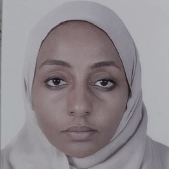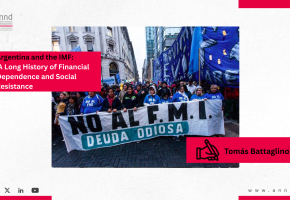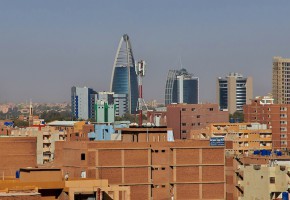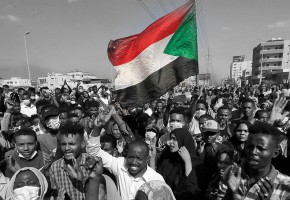

Overview of the Health System in Sudan - Rawia Kamalaldin
Sudan is a country of many races and clans living in urban and rural regions concentrated along the Nile or nearby. Their life expectancy is around 55.4 years (54.2 for men and 56.7 for women). The death rate is 983 per day (40.94 per hour), and the infant mortality rate is 41 per 1000.
The situation in the country is that of floods, environmental disasters, political instability, and high rates of migration and unemployment. These conditions are associated with many health risks, such as sexually transmitted diseases, non-communicable diseases, cancer, tropical diseases, malaria, and kala-azar (black fever or visceral leichmaniasis).
Women and Health in Sudan
Gender inequality remains a challenge. Sudan is yet to sign the Convention on the Elimination of All Forms of Discrimination against Women (CEDAW). Dur to different factors including gender-based violence and domestic violence, women do not have the same access to health care as men. And with a maternal mortality rate of 750 per 100,000 live births and the criminalization of abortion, reproductive health is a critical component of women's health in the country.
Economy and wealth distribution in Sudan
Sudan has a largely traditional economy in which the majority of citizens depend on agriculture and where central planning by the government is limited. Sudan is a member of the League of Arab States and the Common Market for Eastern and Southern Africa (COMESA).
The oil sector had contributed to the growth of Sudan's GDP, but the secession of South Sudan cost Sudan two-thirds of its oil revenues. The mining sector also plays an important role. Nevertheless, almost half of the population is poor and poverty rates vary widely between areas.
Sudan's failure to distribute its wealth fairly was one of the country's prominent features. Many regions witnessed little or no development, leading to the outbreak of armed conflicts.
Sudan is home to 14.5 million vulnerable people suffering from tribal conflicts, floods, and epidemics including COVID-19. They live under prolonged duress brought about by conflicts, economic hardship, and food deprivation.
The internally displaced population is around 2.5 million. Most are in the states of Darfur, South Kordofan, and Blue Nile, the epicenters of protracted conflicts over the past 17 years. In February 2021, Blue Nile State received new refugees from the Benishangul-Gumuz region in Ethiopia.
Health institutions remain weak and unable to provide life-saving services to those displaced or harmed.
Health system governance
The Federal Ministry of Health oversees the entire health sector, as the Government of Sudan is committed to achieving comprehensive health coverage and health for all, in coordination with the Executive Ministries and the State Ministries of Health. Despite its decentralization, the health system remains incomplete due to the inappropriate transfer of some functions to the state levels and localities. The weak capacity and lack of resources on these levels results in low implementation efficiency.
The right to health has a sound legal basis in many Sudanese laws. It is guaranteed in the 2005 Constitution, the 2020 Local Government Law, the 2020 Juba Peace Agreement, and the 2008 Public Health Law.
However, the system's fragility is persistent, including in low health indicators and the huge disparities between urban and rural areas and between the rich and the poor. Health management and services are fragmented and weak. Multiple actors develop separate health policies with little stakeholder participation, leading to many failures in implementation.
The high number of medical students, the lack of training and employment opportunities, and the migration of trained practitioners to the private sector and abroad are also critical challenges facing Sudanese human resources.
Health financing
In 2021, the health budget stood at 9%. The National Health Insurance Fund is one of the main players in providing health services. It provides good coverage for the population (above 80%). Vulnerable groups are covered by the National Health Insurance and the National Institutes of Health.
Zakat, federal and state ministries of finance, charities, and NGOs are also sources of funding to improve the financing efficiency and performance of the health system, providing mixed payment mechanisms for health service providers.
Nevertheless, high out-of-pocket spending (66.95%) had catastrophic consequences on 78% of households. Health insurance premiums do not match the calculated actuarial premiums. Along with the informal sector's low enrollment in health insurance, the situation is that of weak application of strategic procurement methods and public financial management (no oversight of fraud and corruption). The pooling of funds by the National Health Insurance Fund is adequate but there is no clear settlement formula.
International health aid and partnerships
Sudan has signed many international and effective development cooperation agreements with the UN, NGOs, donors, and civil society. International aid had a major role in mitigating the current or potential impact of health disasters. However, after the military coup on October 25, 2021, humanitarian aid was suspended.
Collaboration between health sectors and initiatives
The Federal Ministry of Health adopted an approach that included health in all policies, ensuring the commitment of all sectors to integrating health into the policies set by security, military, and police institutions, as well as private and public institutions.
Several NGOs and youth initiatives are also actively working to support the health sector in Sudan. Their prominent roles have been evident in the response to the COVID-19 pandemic.
Many of the initiatives addressing major health issues are deeply rooted in society and part of customs. A main example is the Saleema campaign against female genital mutilation led by young people, health leaders, celebrities, and influencers. Its main achievement was the criminalization of the process, despite its continued presence in rural areas, where communities consider it a symbol of virtue.
Private foreign and national investments in the health sector
Health services in Sudan are mostly provided by the private sector as the privatization policies of the former regime dried up the public sector. These investments are poorly regulated due to the absence of a defined framework for partnership between the public and private sectors.
A lack of investment in strengthening the health system is putting more than 8 million children under the age of five at risk because they cannot access basic life-saving services. Every year, 78,000 children under the age of five die from preventable causes such as malaria. According to estimates, this number will triple if investments in the health sector continue to decline.
References:
1. Health: Supporting high impact interventions to save lives of mother and babies
https://www.unicef.org/sudan/health
2. Federal Ministry of Health
3. Sudan Health Observatory
4. Saleema initiative - UNICEF https://www.unicef.org/sudan/saleema-initiative
5. WHO EMRO - Sudan Office
https://www.emro.who.int/countries/sdn/index.html
6. Features of the Health System in Sudan: 1990-2010 [in Arabic]
7. The 2022-2024 Strategic Plan to Strengthen and Reform the Sudanese Health Sector, Federal Ministry of Health
8. World Bank Country Data: Sudan
https://data.worldbank.org/country/SD
Recent publications
.png)
ANND Special Edition Newsletter - Reflections from the 2025 Global South Study Week Participants


